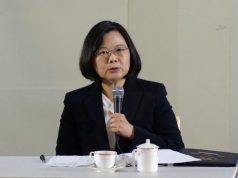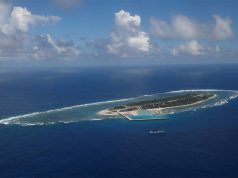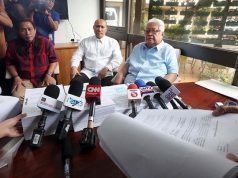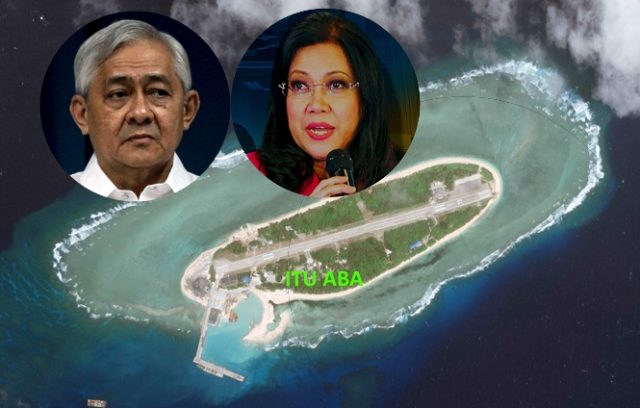
MANILA – Associate Supreme Court Justice Francis Jardeleza on Monday accused Chief Justice Maria Lourdes Sereno of committing “disloyalty to the republic” and “acts of treason” regarding her statements on the West Philippine Sea issue when she was objecting in 2014 to his nomination as Supreme Court associate justice.
“Ako ay pinaratangan na disloyal o nanghudas sa bayan natin. Ang sa pananaw ko po, (I was branded disloyal and having played a Judas on our country) but in my view, it is the chief justice who acted disloyally. Naghudas sa bayan natin … So binabalik ko po sa kanya ang paratang na (So I am flinging back to her the charge of being) disloyal to the government,” he said at the resumption of the hearing on the impeachment complaint filed against the chief magistrate.
Sereno previously objected to Jardeleza’s nomination as Supreme Court associate justice, citing, among others, the former solicitor general’s legal strategy to exclude an area in the Spratlys named Itu Aba as part of the Philippines’ claim in a memorandum meant to be submitted to the arbitral tribunal at the Hague, Netherlands.
In the hearing on the impeachment complaint, Jardeleza said Sereno’s objections were made as supplementary comments in relation to his petition questioning the nominations of the Judicial and Bar Council (JBC) for associate justice in 2014.
Sereno is being accused of manipulating the JBC proceedings to exclude Jardeleza from the shortlist of nominees for associate justice. This was among the list of impeachable offenses allegedly committed by the chief justice.
Jardeleza turned the tables back at Sereno, arguing that it was the chief justice who was being disloyal when she disclosed a piece of classified information from a memorandum regarding the legal strategy of the Philippine government on the West Philippine Sea arbitration case.
“How did she come to possess a copy of the memo?” he said.
Chief Justice Sereno, Jardeleza pointed out, was not part of the arbitration litigants. “The document she used was an illegally secured document. So I am throwing back the disloyalty accusation at her,” he added.
Jardeleza also said Sereno committed treason when she issued another statement in the same supplementary comment claiming that the Itu Aba was an island in the Spratly Island chain, “which was contrary to the government’s position that the area was a rock … So I ask now, who is the one who committed treason? Our panel at the United Nations arbitration proceedings had a hard time proving that Itu Aba was a rock and not an island.”
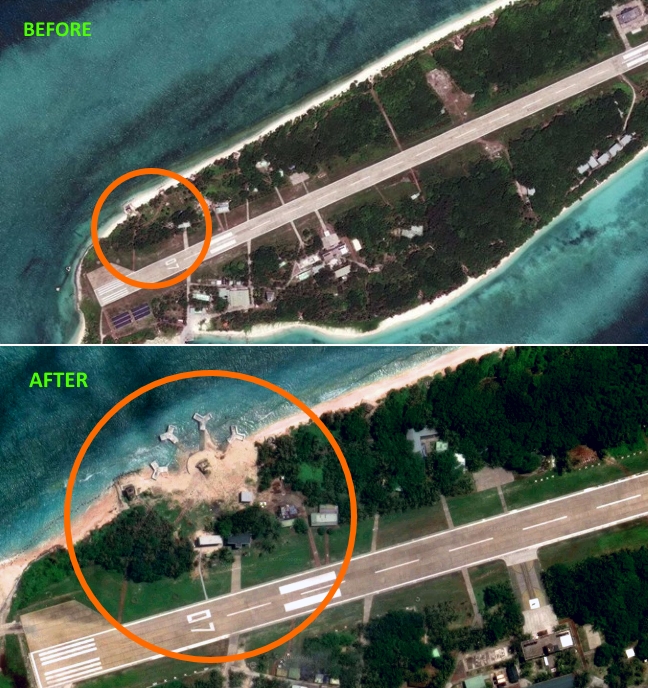
In September 2016, Taiwan was reported to have asked Google to blur satellite images showing what appear to be new military facilities on Itu Aba, a disputed geographical feature also claimed by its arch-rival China.
“Under the precondition of protecting military secrets and security, we have requested Google blur images of important military facilities,” Taiwan Defense Ministry spokesman Chen Chung-chi told reporters, according to Reuters.
Taiwan has controlled 800-meter-long Itu Aba, which it calls Taiping, since the 1950s. Like much of the hotly contested South China Sea, Itu Aba is also claimed by China, the Philippines and Vietnam.
Taiwan’s request came after the South China Morning Post pointed out the new star-shaped structures that were not present on earlier Google Earth images.
Jardeleza also claimed that Sereno’s pronouncement on Itu Aba while the arbitration case was still pending in 2014 tended to reveal that the Philippine government’s counsels seemed to be in disharmony regarding their legal strategy.
He told the impeachment hearing that the legal strategy on the West Philippine Sea case was a top secret matter being discussed by the government’s Filipino and American lawyers.
Again he said Sereno was the one “who committed treason while the case was pending” by making use of a top secret document, and on at least two instances, in writing, referring to Itu Aba as an island when the government panel was describing it as a rock.
Jardeleza said the discord among the Philippine government’s counsels stemmed from the proposal of the American lawyers to include the Taiwan-occupied Itu Aba in the memorial or memorandum filed by the Philippines to the U.N. arbitration case on the West Philippine Sea.
He said he was not the only one against the idea of Itu Aba’s inclusion, but also Philippine government lawyers as well who were initially not enthusiastic about the proposal because of the uncertainty about the area’s status as either an island or a rock.
Based on the United Nations Law of the Sea (UNCLOS), according to Jardeleza, an island would cover 200 nautical miles of exclusive economic zone (EEZ) while a rock would only cover 12 nautical miles.
The former solicitor general said only eight features in the Spratly’s were included in the Philippines’ stand before the arbitration case at the Hague, Netherlands. He said all eight features were considered rocks because the legal team was trying to limit the tactical exposure and risks of the case.
He said a problem would arise if Itu Aba was considered an island because its 200 nautical mile-EEZ would overlap with Palawan’s EEZ.
President Benigno “Noynoy” Aquino III, however, later decided to include Itu Aba in the arbitration case, to which Jardeleza complied with in building up the case. He maintained that the Philippine legal team worked hard at defending the view that Itu Aba was a rock.
In 2016, the United Nations Tribunal sided in favor of the Philippines, saying that the country has exclusive sovereign rights over the West Philippine Sea and China’s nine-dash line argument was invalid.




